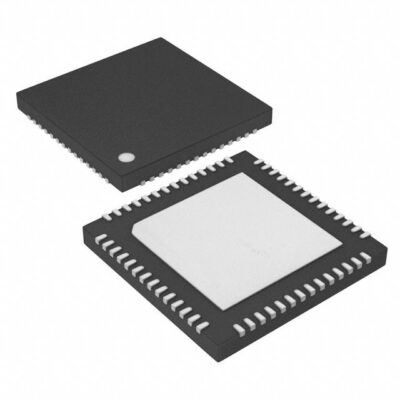FT4232H-56Q
Part Number: FT4232H-56Q
Manufacturer: FTDI, Future Technology Devices International Ltd
Description: IC USB TO UART/MPSSE QUAD 56VQFN
Shipped from: Shenzhen/HK Warehouse
Stock Available: Check with us
ICRFQ.com - Electronic Components Distributor in China Since 2003

Part Number: FT4232H-56Q
Manufacturer: FTDI, Future Technology Devices International Ltd
Description: IC USB TO UART/MPSSE QUAD 56VQFN
Shipped from: Shenzhen/HK Warehouse
Stock Available: Check with us
| Datasheet | |
|---|---|
| Category | Integrated Circuits (ICs) |
| Family | Interface – Modules |
| Manufacturer | FTDI, Future Technology Devices International Ltd |
| Series | – |
| Packaging | Bulk |
| Part Status | Active |
| Protocol | USB |
| Function | Bridge, USB to UART,FIFO |
| Interface | FIFO |
| Standards | USB 2.0 |
| Voltage – Supply | 3.3V |
| Current – Supply | – |
| Operating Temperature | -40°C ~ 85°C |
| Package / Case | Module |
| Supplier Device Package | Module |
The FTDI FT4232H-56Q is a wonderful USB device that represents the 5th generation of their USB solutions. This integrated circuit is a USB 2.0 High-Speed (480Mb/s) to UART/MPSSE converter with a variety of characteristics that make it a versatile and powerful tool for a variety of applications. In this complete article , we will look at the features, applications, and how to use the FT4232H-56Q efficiently.
At its core, the FT4232H-56Q is a USB-to-serial converter, but it goes far beyond that:
The FT4232H is a very adaptable USB to UART/MPSSE IC, with its functionality split into major functional pieces that allow it to operate. Let’s take a closer look at each of these functional blocks:
These functional blocks work together to make the FT4232H a flexible USB to UART/MPSSE IC capable of handling a variety of serial communication workloads including synchronous serial protocols. The FT4232H’s functional blocks provide the basis for efficient and versatile operation, whether it’s data transfer between a USB host and many UART devices or simulating other synchronous serial interfaces.
The FT4232H USB to UART/MPSSE IC, like the well-known FTDI FT232 devices, can be set to work in UART (Universal Asynchronous Receiver-Transmitter) modes. These UART modes enable asynchronous serial communication, and the FT4232H allows for the configuration of multiple RS232, RS422, or RS485 interfaces. The following sections describe how to configure the FT4232H in certain UART modes:
RS232 is a serial communication protocol that uses voltage levels ranging from -3V to +3V to indicate logical states. To configure the FT4232H as an RS232 interface, connect the UART pins of the FT4232H to an RS232 transceiver for suitable voltage level conversion. This configuration enables the FT4232H to interface with RS232-enabled devices or systems, such as serial terminals and legacy equipment.
Another serial communication standard is RS422, which employs differential signaling, in which two lines, one for transmitting data and the other for receiving data, carry complementary signals. In comparison to RS232, this arrangement provides higher noise protection and longer communication distances. To configure the FT4232H in RS422 mode, connect it to an RS422 transceiver to handle the differential signaling.
RS485 is similar to RS422, but it allows numerous devices to share the same communication channel. For noise protection, RS485 also employs differential signaling. The FT4232H is configured for RS485 by connecting it to an RS485 transceiver, which allows for multi-point communication. The RS485 protocol is widely used in industrial automation and control systems.
One of the FT4232H’s distinguishing qualities is its flexibility to be configured as a combination of different UART ports. This means that you can use the FT4232H’s UART channels for a variety of reasons, such as RS232 for one, RS422 for another, and RS485 for still another. This adaptability is especially important when interacting with multiple devices or systems inside a single application.
To summarize, the FT4232H’s UART interface modes enable it to simulate RS232, RS422, and RS485 interfaces, making it suitable to a wide range of serial communication requirements. Its ability to operate in mixed configurations adds to its versatility, making it an invaluable tool for engineers and developers working on projects requiring a variety of serial communication protocols.
The FT4232H-56Q is a high-performance USB to UART/MPSSE IC with a wide range of capabilities and applications. This versatile gadget offers a wide range of possibilities for your projects, whether you are a hardware engineer, embedded systems developer, or hobbyist. It simplifies hard operations and expands the capabilities of your designs with high-speed USB connectivity, numerous UARTs, MPSSE engines, and sophisticated features. Investigate the FT4232H-56Q’s capabilities and enter the world of smooth USB-to-serial connection.
Contact ICRFQ, a respected Chinese electronic component supplier, for further information and purchases, and embrace the future of flash memory technology.
WhatsApp us